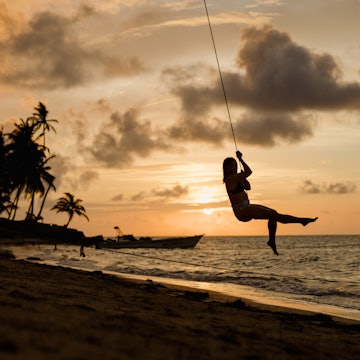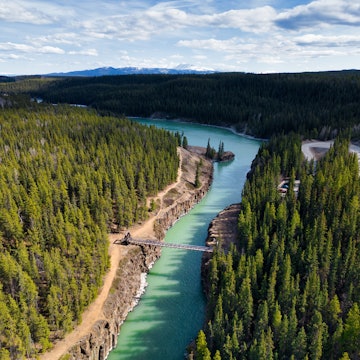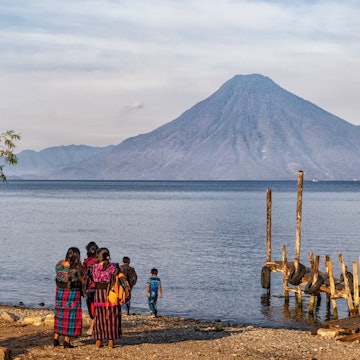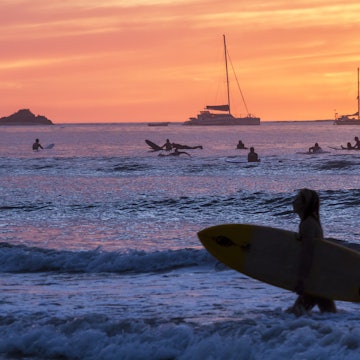
The 10 best things to do in Casco Viejo, Panama City’s historic heart


Panama City’s historic neighborhood of Casco Viejo features elegant buildings in various stages of refurbishment. Cacio Murilo/Shutterstock
Every visit to Panama City should begin in its historic, soulful old town.
Known variously as Casco Viejo, Casco Antiguo and (the lesser-used) San Felipe, this neighborhood is always the hippest part of this cosmopolitan city. And it’s where just about everyone falls in love with Panama’s capital.
This compact, UNESCO-listed district is a wonderful mix of restored neoclassical, rainbow-hued buildings with romantic, wrought-iron balconies; centuries-old churches; open-air rooftop bars; and narrow cobblestone streets.
Though humble in size, Casco Viejo is where you’ll find many of Panama City’s top restaurants and trendiest bars, and its historic buildings have scintillating stories to tell. Here are 10 ways to get to know this enticing neighborhood.

1. Stroll Casco Viejo’s cobblestone streets
A stroll through Casco’s cobblestone streets is a rewarding activity in itself. Along the neighborhood’s four palm-lined avenues and four main plazas – Plaza de la Independencia, Plaza Herrera, Plaza Bolívar and Plaza de Francia – are structures thirsty for a fresh lick of paint, alongside restored structures reimagined as apartments and boutique hotels.
For a meal or refreshing drink, pop into Hotel la Compañia, built as a Jesuit convent in 1688, or the American Trade Hotel, which, at all of three stories, was once the tallest building in the whole city.
Bright accents to the sharp contrasts between elegance and decay, numerous murals by Rolando “Rolo” de Sedas enliven Casco’s streets. This Panamanian artist is known for transforming urban spaces with colorful patriotic iconography.
Planning tip: Casco is very safe to walk around. Plus, even though the area is a tourist hub, the streets are relatively free of hawkers – leaving you free to enjoy the street art, cool cafes and overall atmosphere in peace.
2. Learn about the country’s star attraction: the Panama Canal
Building a cross-country canal to link the Pacific and Atlantic oceans was a wildly ambitious idea – one that came to fruition in fits and starts, and at a tragic cost.
Work started on the now-iconic waterway in 1880, and by the time of its completion in 1914, some 25,000 workers on the project had died, mostly from tropical diseases.
Today, this extraordinary feat of engineering is the country’s star attraction and a source of great national pride. While the Miraflores Locks are an essential stop for any visitor to Panama City, you can get an intro without leaving Casco Viejo at the Interoceanic Canal Museum (also known as the Panama Canal Museum).
Located in one of the neighborhood’s most handsome historic buildings, the museum displays photographs, documents and objects that narrate the history of the canal – and of the country of Panama itself – in vivid fashion.

3. See a true treasure at Iglesia de San José
In the Iglesia de San José, the extraordinary Altar de Oro (Golden Altar) is a true treasure – with a legend to match.
The story goes that when Welsh privateer Henry Morgan launched his 1671 attack on Panamá Viejo – which resulted in the destruction of the original Panama City – Jesuit priests painted the altarpiece black to disguise it, telling Morgan that another pirate had already stolen it.
The baroque altar was later moved to its current location in Casco Viejo, where it stands today – the only relic to have been salvaged after Morgan’s devastating attack.
4. Rock a Panama hat
Worn by everyone from gold rush pioneers to US presidents – not to mention spies the world over – the Panama hat has become synonymous with this Central American nation.
Actually Ecuadorian in origin, these straw hats are now sold everywhere in Panama City, with prices starting from US$15 at street stalls to US$800 in shops.
At Victor’s Hats, rows of shelves display a variety of styles and colors. If in doubt, stick to the classic version, in natural tones.
Insider tip: As a general rule, the tighter the weave, the pricier the hat.

5. Tuck into ceviche at Mercado de Mariscos
At the beginning of palm-fringed waterfront boulevard Cinta Costera, Mercado de Mariscos is Panama City’s ever-lively fish market.
Stalls display huge spiny lobsters on ice, filleted fish neatly stacked and freshly caught shrimp piled high. At the restaurant upstairs, you can enjoy the catch of the day cooked to order.
Don’t miss the citrus-heavy ceviche, served heaped into Styrofoam cups. This popular order is best paired with an ice-cold beer.
6. Sip the Champagne of coffees
There’s coffee – and then there’s Gesha coffee. It’s Panama’s most-prized brew, and one of the world’s finest (and most expensive) varieties of coffee you’ll find anywhere.
Originally brought over from Ethiopia, Gesha coffee beans were found to thrive in Panama’s humid climate, particularly in the high-altitude Chiriquí region.
But you’ll have to save your dollars to enjoy it, batches of Gesha coffee have sold for as much as US$6000 per pound. In Casco, you can sip the Champagne of coffees at Café Unido or Tiempos in the American Trade Hotel; expect to pay US$10–15 per cup.

7. Shop for molas while admiring seafront views
Casco’s fascinating streets are packed into a small peninsula that juts out into the Pacific – and the water views from here are thus impressive, with giant ships waiting to pass through the canal set against the skyscrapers of downtown.
The best outlook is from Paseo Esteban Huertas, a pretty promenade built atop the old city’s outer wall. Under a canopy of bougainvillea, this scenic path runs from Plaza de Francia to the former Club Unión (which stood in for a Bolivian villa in the Bond flick Quantum of Solace).
Along the waterfront, Indigenous Kuna women sell the embroidered molas (handmade textile panels) for which the country is famous.
8. Get into the spirit of rum at Pedro Mandinga
Pedro Mandinga is Panama’s first artisanal craft rum distillery, and the first dedicated rum bar to open in Casco Viejo.
Tropical-print armchairs, rattan ceiling fans and vintage salsa records make this an easy spot to while away an afternoon (happy hour runs daily from noon to 6pm).
Before ordering your drink, ask to sample the silver and spiced house rums made with rapadura pure cane sugar. While the menu here boasts a great collection of cocktails, nothing beats the Mandinga mojitos.

9. Admire the neighborhood from above at a rooftop bar
Casco is the city’s nightlife hub, with an impressive number of rooftops where you can enjoy Panama’s year-round warm weather.
Lazotea, atop the stylish boutique Hotel Casa Panama, offers sparkling skyline views and a chance to dip in the pool between beverages. (It was the first rooftop in the old town to have its own pool).
The rooftop bar at Tantalo is eternally popular, while Casa Casco is where well-dressed Panameños go for 360° views of the city and the bay.
10. Sample the rich flavors of Panamanian cuisine
For soul-nourishing and highly photogenic updates of traditional Panamanian cuisine, don’t miss Fonda lo Que Hay, one of the best restaurants in Casco Viejo (and all of Panama).
Whatever else you order on the frequently refreshed menu here, try the deliciously dressed patacones (twice-fried plantains).
To feast on several of Panama’s national dishes under one roof, Diablicos is your best dining option in Casco. Favorites include enjoy hearty sancocho (a broth of chicken, corn on the cob, starchy vegetables and cilantro), or ropa vieja, a shredded-meat dish.
On certain evenings, the restaurant puts on a showstopping presentation that includes singing, dancing, drumming and appearances by diablico sucios (dirty devils), prominent characters in Panamanian folklore.















